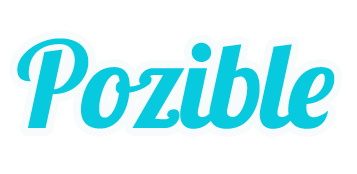This is a guest post by Dr. Tom Keeble, who was born and raised in Melbourne, Australia, and completed a science degree with honours at The University of Melbourne. He then completed a Ph.D, studying Developmental Neurobiology, at The Walter and Eliza Hall Institute in Melbourne, and the Queensland Brain Institute. He did a postdoc in Singapore and has now moved into Science Communication. Because he couldn’t see himself staying in the active research scene but hated the thought of leaving science entirely, becoming the Neuroscience Communicator at The Florey Institute of Neuroscience and Mental Health has been the perfect fit.
Most people reading this blog will be familiar with the idea crowdfunding – so I won’t explain the concept in much more detail other than to state its definition as “asking heaps of people to chip in to do something epic.”
Pozible is the Australian equivalent of Kickstarter.com, and is the third largest crowdfunding platform in the world. It works on the “all-or-none” model of funding projects, so if you don’t reach your target, you don’t receive any of the funds (you can’t buy ¾ of a PCR machine…). Fifty-five percent of Pozible projects are successful, and they have raised over $11 million since 2010. What’s more, they have an entire section of their site dedicated to crowdfunding research projects.
The Florey Institute of Neuroscience and Mental Health performs some pretty epic neuroscience – we’re 4th in the world in terms of cumulative publication citations since 2002, and we study the brain from conception right through to the end of life. Major disease focuses include stroke, epilepsy, autism, Multiple Sclerosis, Parkinson’s, Huntington’s and Alzheimer’s Diseases.
The concepts and rationales behind crowdfunding science have been explored quite extensively in a number of articles, most recently in TheGuardianUK, and I won’t belabor them too much here.
In the Australian context, the pool of funds available for Medical Research via our National Health and Medical Research Council has remained static at $800 million, while funding success rates have fallen to an all-time low of 17%, with even more dismal early career researcher success rates.
Against this background, crowdfunding can provide the resources to generate pilot data that forms the basis of a larger grant application, particularly for a high-risk high-reward project where proof of principle is crucial, and for younger researchers still establishing that vital “track record.”
Pledgers at every level get to be more hands-on with the research, becoming part of the daily life of the labs that are raising the money, through online engagement and in the case of higher pledgers, visits to the Institute. The campaign is also a valuable tool in educating scientists about their role in public engagement – increasingly being seen as non-negotiable when receiving public dollars.
Traditional engagement tools at The Florey Institute include direct mail, e-newsletters, on-site public lectures and school outreach programs. These are very successful, but in the next decade this model is going to need updating – and online engagement through crowdfunding is great training for scientists; engage or perish!
Now, to the projects themselves!
The Florey Institute has 7 projects up on Pozible, the most successful ones being run by those with extensive online and offline networks to draw upon. Our standout performers have been, in no particular order:
- A project run by Dr David Hawkes gives pledgers the chance to either suggest names for 4 viral vectors he’s creating, with the most popular names getting the honour, or you can skip the popularity contest and ‘buy’ a name for the vector yourself – which will then literally go viral as it spreads to his collaborators around the globe.
- Dr. Wah Chin Boon has leveraged her extensive international connections to great success for her project examining DNA changes in response to environmental chemicals possibly leading to Autism.
- Everyone’s looking for ways to reduce the pharmacopeia associated with modern day life. Animal studies have shown that light levels play an important role in increasing or decreasing the number of brain cells that produce dopamine, an important “feel-good” neurochemical. Dr Tim Aumann is looking to see whether this holds true for humans as well, by examining brains from people who lived (well, died) during periods of long days and short nights, or vice versa, opening the door to drug-free brain treatments.
- And finally, in what might be a world-first, Faith Lamont is looking to crowdfund her Ph.D stipend! Due to citizenship restrictions, Faith as a New Zealander is ineligible for funding from the Australian Government, so she’s looking for funding from the people! Her project aims to use humanized mouse assays – ipads for mice – to better assess learning and memory in mice in the context of Schizophrenia and Autism. Faith’s even made a little game where you can test your cognitive skills against those of a mouse.
So head over to Pozible and check out the projects – one of the added beauties of crowdfunding is that the project doesn’t even have to be in your own backyard, the benefits of science are global – and epic.
Image: WikiMedia


